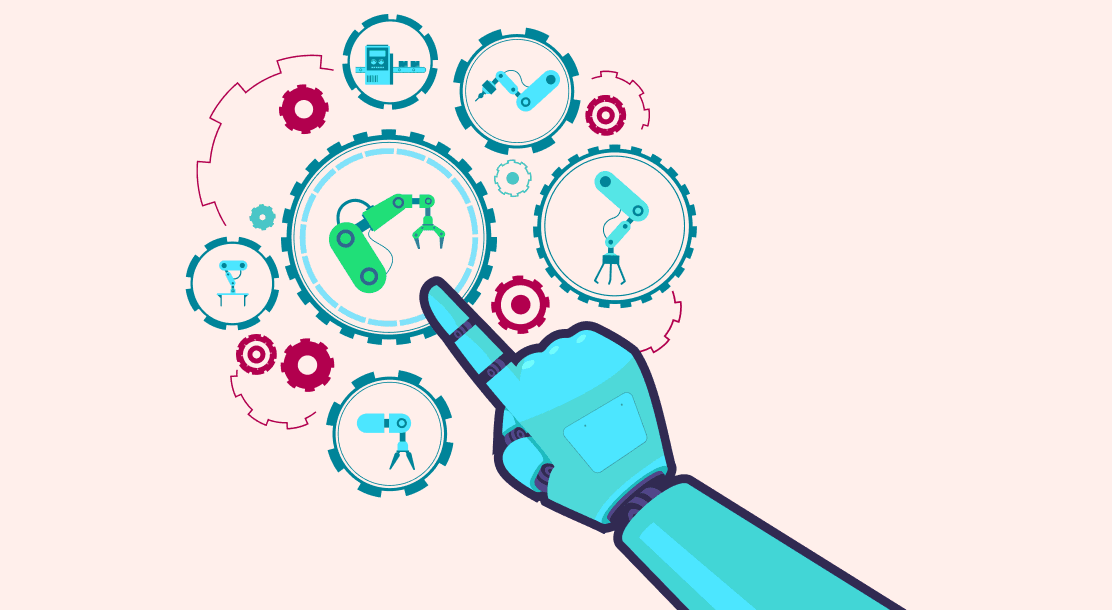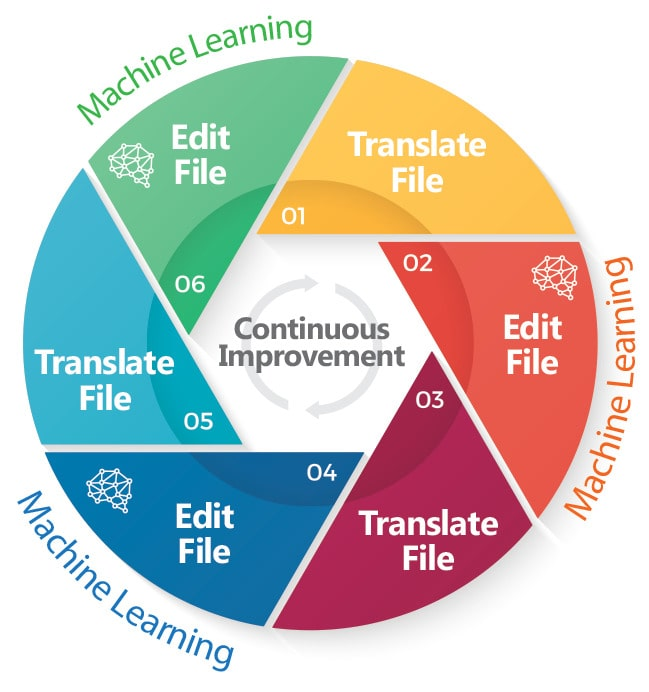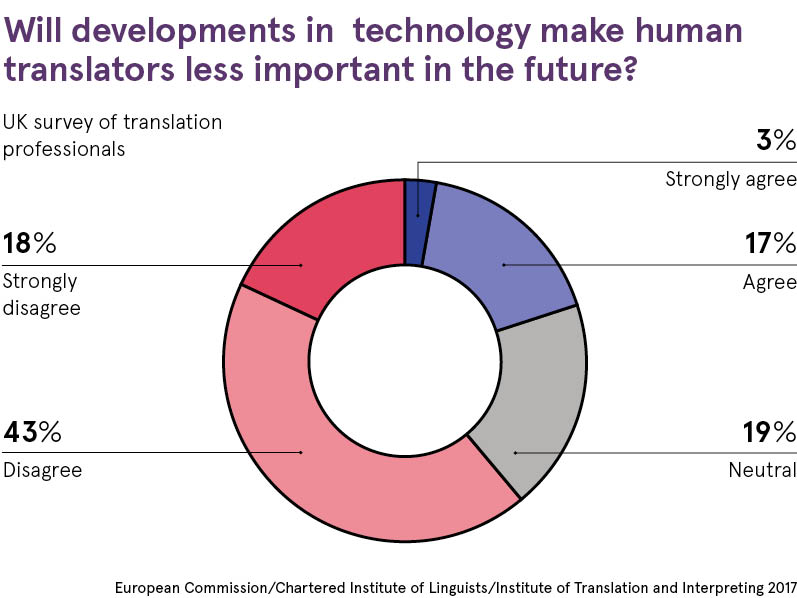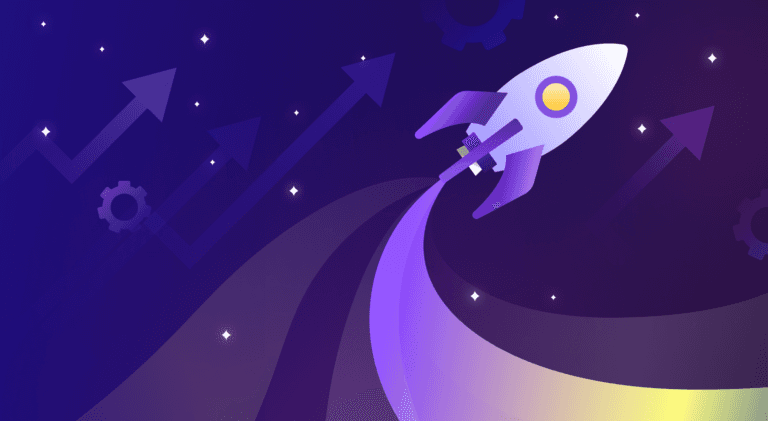Is AI Technology The Future Of The Translation Industry?

Language translation is no more an alien realm in today’s digital world. Thanks to the easy access to high-tech digital translation tools, the once complex translation process requires a highly skilled individual fluent in at least two languages. Now, translation only requires minimal human involvement.

AI translation technology is gradually changing the face of the future of the translation industry. The translation is one of the highly demanded niches in the language services industry, and as a career, it has always been a lucrative option. Our race has mastered artificial intelligence and deep learning. A new generation of translation applications and software will be an indispensable part of the translation industry in the future years.
But with the advent of AI translation tools and the success rate of artificial intelligence in translation, will the future of translation be controlled by humans or machines?

How is AI Affecting the Translation Industry

Here are some of the most significant impacts of AI translation technology in the sphere of translation.
1. Less workforce required
The introduction of AI has led to a severe reduction in employment opportunities in the translation industry. Since machine translation is easily accessible and a much faster process than human translation, it has dramatically reduced the need for a workforce.
2. Language learning has become an inclusive affair
AI translation technology has made language learning more fun and a much more inclusive process. Unlike before, when learning foreign languages could only be done with the help of a skilled tutor at extremely high prices, now it is no longer as difficult. One can learn any language they want simply with the help of AI tools, language apps, and software.
3. Multiple gadgets and softwares
Some significant technological advancements in AI translation include Google neural machine translation, which uses deep learning and generates better translations. It supports a vocabulary of around 100 languages and is very fast.
Another great AI translation technology tool is Voice Translator. This application functions on voice command and allows the speaker to transcribe words and phrases.
Another excellent translation tool is DeepL. DeepL is an online machine translation service. It allows the users to translate between language combinations of more than 21 languages, including Dutch, French, Russian, Polish, Italian, Portuguese, English, Spanish, etc.
Does AI Translation Technology Define the Future of Translation

When discussing the impact of AI translation technology on the future of translation, it is crucial to look at the aspects in which AI does not stand as a parallel to human translation. Maybe then we are better prepared to answer what will be the future of the translation industry?
- The human factor
AI largely lacks is the touch of a human understanding while translating a message from one language to another. It cannot have the same impact as that of an individual. AI translation technology cannot keep track of all the dialects of the world and the minor nuances of language that differ from region to region.
- Context
Human beings are still superior to machines in terms of language as they place the meaning of their words in a specific context. It is the context that lends the message its true meaning. AI translation technology cannot pick up the context always and might end up misinterpreting a message. AI translation technology has this significant disadvantage.
- Connection
Culture is a supernatural entity, and machines are yet far away from deciphering the nuances and intricacies of culture. A human interpreter’s translated content reflects unparalleled human interaction and connection. AI translation technology cannot substitute it.
While AI translation can significantly impact speed and enhance the process of translation, it still cannot bring about the same accuracy and contextual necessities that a human translator or interpreter is capable of. Human translators, and their needs, are relevant even in a highly advanced and technologically oriented world.
Machine translation has aced almost all language rules and concrete translation requirements. Still, an essential drawback is that AI is not adaptable to the subjective elements of language and text. Language is subjective, as well as dynamic. Human translators offer solutions that are tailormade for each project differently. A more accurate description of the future of the translation industry might be a computer-aided human translation or human-assisted machine translation.
The demand for human translators will not be obsolete soon
AI is a mighty and constantly evolving area of technology. And it has led to a tremendous increase in tech-based employment opportunities in recent years. Language learning has become super easy and accessible to people worldwide due to AI translation technology. Despite the slight threat, AI cannot completely replace human translators. Instead, there is a brighter scope for the two to collaborate and enhance the translation services.
FAQs
Technology has played a vital role in making the process of translation easier and faster by improving quality, enhancing the productivity of teams and clients, and ensuring connectivity between systems.
There are several career opportunities available in the translation services industry, such as:
1. Medical interpreters
2. Community interpreters
3. Localizers
4. Judicial or legal translators
5. Literary translators
6. Sign language interpreters
7. Trilingual interpreters
8. Conference interpreters, etc.
Being a translator comes with several benefits like working on diverse projects, controlling one’s work hours, high demand for translation services, working remotely, etc. At the same time, it has a few downsides, like it is an insatiable option, the work is time-consuming and tedious, and some projects do not pay well.
There are many types of machine translation; some of its broad categories under NLP (natural language processing) are:
1. Hierarchical phrase-based translation
2. Syntax based translation
3. Phrase-based translation
4. Word-based translation
Some of the frequently occurring issues in translation include structural problems, the difference in the cultural contexts, lack of technical knowledge, compound words, missing terms, words that have more than one meaning, etc.
Latest Blogs
Explore how Google’s 2025 AI search updates triggered ranking chaos. Learn actionable strategies to adapt your SEO for AI Overviews, zero-click searches, and SERP volatility. Stay ahead now.
Learn how to rank on AI search engines like ChatGPT, Perplexity, and Gemini by optimizing your content for authority, structure, and relevance. Stay ahead in AI-driven search with this strategic guide.
Explore the best healthcare SEO services for your medical practice. Improve online visibility and effectively reach more patients in need of your services.
Get your hands on the latest news!
Similar Posts
Artificial Intelligence
3 mins read
How to Rank on ChatGPT, Perplexity, and Gemini: A Strategic Guide for Marketers

Artificial Intelligence
5 mins read
How Free AI Tools for Content Creation Can Boost Your Content Strategy

Artificial Intelligence
5 mins read